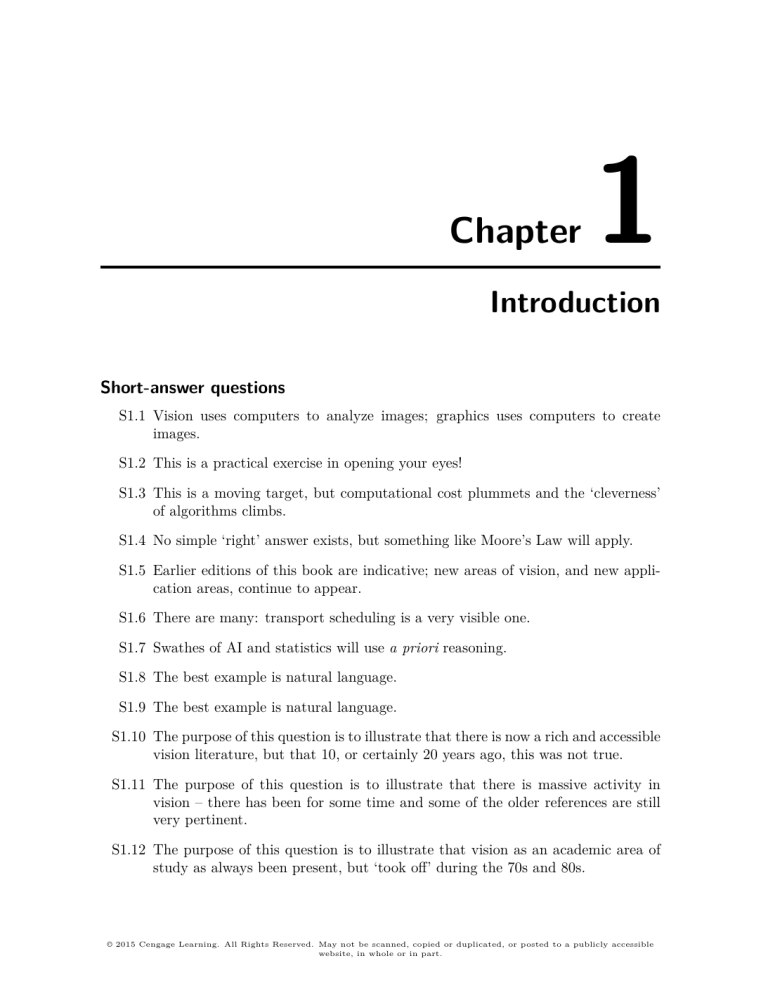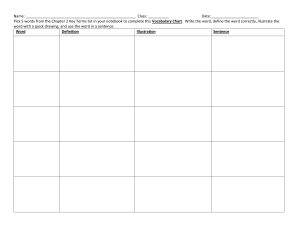
Chapter 1 Introduction Short-answer questions S1.1 Vision uses computers to analyze images; graphics uses computers to create images. S1.2 This is a practical exercise in opening your eyes! S1.3 This is a moving target, but computational cost plummets and the ‘cleverness’ of algorithms climbs. S1.4 No simple ‘right’ answer exists, but something like Moore’s Law will apply. S1.5 Earlier editions of this book are indicative; new areas of vision, and new application areas, continue to appear. S1.6 There are many: transport scheduling is a very visible one. S1.7 Swathes of AI and statistics will use a priori reasoning. S1.8 The best example is natural language. S1.9 The best example is natural language. S1.10 The purpose of this question is to illustrate that there is now a rich and accessible vision literature, but that 10, or certainly 20 years ago, this was not true. S1.11 The purpose of this question is to illustrate that there is massive activity in vision – there has been for some time and some of the older references are still very pertinent. S1.12 The purpose of this question is to illustrate that vision as an academic area of study as always been present, but ‘took off’ during the 70s and 80s. © 2015 Cengage Learning. All Rights Reserved. May not be scanned, copied or duplicated, or posted to a publicly accessible website, in whole or in part.

![2864-1633685068063-SelfStudy 10.3 [16 hours]](http://s2.studylib.net/store/data/026049766_1-f034de3ab0ba8868c18081f0c54c7593-300x300.png)


